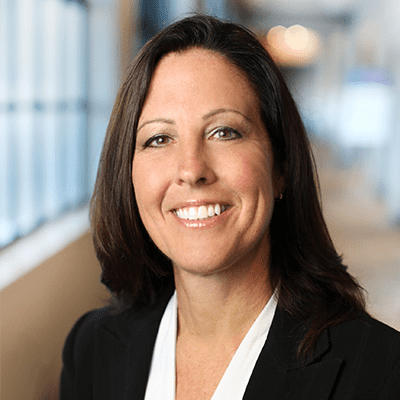- Solutions
- Solutions
- Home Health
- Hospice
- Life Plan Community
- Palliative Care
- Private Duty
- Senior Living
- Skilled Nursing
- Skilled Nursing
- Skilled Nursing Software
- Advanced Insights
- Customer relationship management
- Data and analytics
- Financial & operations management
- Marketing
- Nutrition management
- Referral management
- Regulatory compliance
- Retail management
- Resident engagement
- Revenue cycle management
- Skilled nursing interoperability
- Partners
- Blogs
- Resources
- About
- User Conference

Turning data into action: How SNFs can utilize EHR data to optimize operations
Proper documentation is essential in the skilled nursing space, for a variety of reasons. But beyond meeting increasingly complex and demanding regulatory and reimbursement requirements, more leaders are discovering the value of utilizing existing EHR data to drive key improvements in clinical, financial and workforce operations.
Better still, EHR platforms have evolved to the point that leaders themselves don’t need to delve into the complexities of that data to realize these benefits. As long as they ensure proper documentation by their staff, the right partner can help guide them in applying their EHR data to eliminate inefficiencies that have traditionally been difficult to confront, and with minimal effort. In effect, the data and the platform themselves drive the clinical, financial or workforce improvements.
Here’s what leaders should know about the importance of properly gathering EHR data, and how to put it to the best possible use to drive quality improvements across their entire organization.
Leveraging EHR data doesn’t require technical expertise
The gathering of EHR data has come a very long way in recent years. In the past, a popular misconception has been that, because the data can be so complex, it takes in-depth technical expertise to fully understand it, much less utilize it.
Today, though, leaders and the teams they manage shouldn’t, and don’t, need a background in data to get the most value from the EHR data they gather every day. It’s the job of the platform, the developers and the product managers who supply the EHR system to guide leaders in putting it to the best use.
To that end, today’s leading EHR providers work to turn their clients’ data into a quick and easy roadmap for improved operational performance. Not only that, but they also provide the framework to integrate those improvements on a day-to-day basis, with minimal intervention required.
So, finding the right EHR platform provider means not only getting a tool for comprehensive EHR documentation, but also a way to drive improvements in three key areas:
- Financial performance
- Operational efficiency
- Clinical outcomes
Billing and financial optimization
Optimizing EHR data can help make sure that an organization’s billing is working properly. Based on the data that’s available in the system, leaders can ensure that they’re getting the maximum billing for the services they provide. A sophisticated EHR platform can do this by helping to ensure accuracy in billing and reimbursement with double and triple checks against what’s being submitted to catch errors before they occur and deliver surface warnings about any potential risks to reimbursement.
Staff deployment and optimization
Properly utilizing EHR data can also help make sure that staff are being properly utilized and allocated. The EHR data can help ensure that workers are fully aligned with the needs and requirements of each facility, and each of the units in those facilities, by quickly revealing gaps where they may be falling short. Conversely, it can also clearly show whether a specific area needs more staff than currently assigned, based on acuity and risk.
Utilizing EHR data in this way could even help improve staff retention. Double-checking staff performance and history then matching it against available data can help ensure that workers are being utilized in a way that best fits their skills and job expectations. It can also boost job satisfaction and give a hand to staff who may be struggling.
Clinical data and workflows
Of course, the primary use of EHR data has traditionally focused on clinical optimization. A prime example of this is the fall risk evaluator that’s available with some EHR platforms. This is the ability to take information that’s spread across visits, medications, diagnoses and other key indicators, and summarize it into a packaged alert that indicates whether a resident is at an elevated fall risk, and the potential reasons why. It helps to let staff know, “hey, maybe you should keep an eye on this resident,” or “we may need to reevaluate our clinical approach to this patient,” before an event occurs.
This kind of clinical optimization is already becoming a standard expectation among EHR systems. And today, it can be expanded to areas beyond falls, including risk of malnutrition, sepsis, allergic reactions, and more.
This info could be communicated with a detailed report, of course. But today, we’re finding that quick-hit alerts and notifications, such as direct-to-consumer media like text messages and emails, are the types of channels that have the most impact across clinical teams.
True, nobody wants to get bogged down with too many alerts. Yet some information does need to be communicated urgently. So, an EHR provider should work with each organization to find the right balance and determine how to communicate important data and alerts in the way that works best for them and their care teams.
How to ensure the best possible EHR data utilization
Although a dependable EHR platform will guide organizations through the process of turning EHR data into action, the results will only be as good as the data. The responsibility of leaders, then, is to make sure that staff members are carrying out proper documentation. Having accurate, comprehensive data available in the system gives the developers and the product managers of the EHR platform the ability to develop platforms that improve efficiency in a way that meets each SNF’s specific needs.
In other words, all of this is possible only with the right data. So, it’s still very important to make sure that staff members know they must carry out documentation properly. When that’s in place, leaders can then trust the provider of their EHR platform to guide them through the rest — to help translate that data into the insights and performance improvements, or, when necessary, to offer to help train staff with best practices for data documentation.
This isn’t something that any EHR platform can accomplish. There’s a benefit in partnering with an established and proven EHR provider committed to investing in intelligent solutions incorporating future technologies. It’s important to choose a partner that can demonstrate the ability to assess the information gathered and summarize it into quick and easy-to-consume pieces of actionable insights — and, in so doing, to identify any inconsistencies, inefficiencies or challenges, and apply the right data in the right way to help overcome them.
That’s at the core of what it means to turn EHR data into action: finding the right partner with the expertise to take that data and present it to leaders in a comprehensive way that supports solution identification and implementation. The EHR provider should do the heavy lifting, so to speak, while facility leaders and personnel continue to focus on doing what they do best — caring for residents and supporting their families. Ultimately, they’ll be empowered to do so with greater efficiency and provide better outcomes than ever before.
Trust MatrixCare to find the EHR data solutions that work best for your organization
At MatrixCare, we’re proud to be an innovator in the mission of leveraging EHR data to its fullest potential. Whether it’s in our core EHR offering or additional models like Clinical Advanced Insights, we’re always working to provide the kind of solutions that enable your organization to run more efficiently and effectively, positively impacting your bottom line at a time when that’s never mattered more.
Learn more about how we can help your organization realize the full potential of its EHR data:
See what MatrixCare can do for you
Daniel Zhu
Daniel Zhu comes from a diverse background of clinical experience and technology entrepreneurship. Having spent five years in clinical and clinical research roles with the Alberta health system and the University of Toronto health network, he has diverted his medical expertise to architecting and building technology solutions to optimize health care practice. At various organizations, he has lead engineering teams, product teams, and founded his own natural language processing start-up in the clinical research space. Stepping away from the start-up world, Daniel has spent time as a data consultant for large corporations such as Ford, Co-op, and RBI. Re-entering the health technology field, today Daniel has recently joined the ResMed and MatrixCare team to lead the productization of AI and machine learning capabilities.
Related Posts


See MatrixCare in action
Start by having a call with one of our experts to see our platform in action.
MatrixCare offers industry-leading software solutions. Thousands of facility-based and home-based care organizations trust us to help them improve efficiency and provide exceptional care.
© 2025 MatrixCare is a registered trademark of MatrixCare. All rights reserved.






